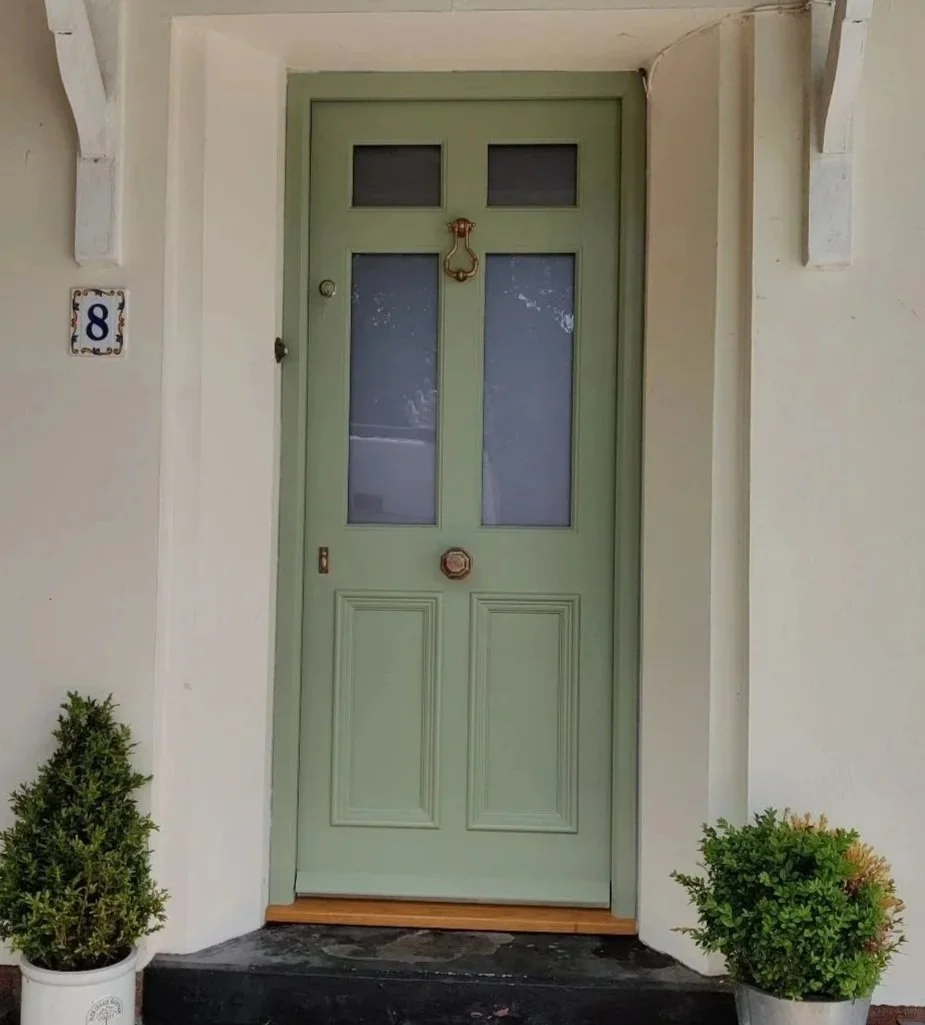Heritage & Period Doors
Authentic timber doors for listed buildings and period properties
Older buildings need doors that look like they belong there – not something that’s obviously been pulled out of a PVC brochure. Proportions, mouldings, panel layout and glazing all make a difference. Get those wrong and the door will shout “new” from the street.
At JM Joinery we manufacture heritage and period-style timber doors for traditional houses, cottages, farmhouses, barn conversions, and conservation area properties. We work from your existing door, old photos or architect’s drawings to get the details right, while still giving you a door that functions properly day to day.
Supply only, or supply & fit within our installation area.
What we mean by “Heritage & Period”
We’re talking about doors for:
Listed buildings (subject to consents)
Conservation areas
Older stone, brick and timber-framed houses
Barn conversions and character properties
The aim is simple: it should look like it has always been there – just in good condition and actually working.
Design & detailing
This is where heritage work is won or lost. We focus on:
Correct proportions – stile, rail and panel sizes that suit the property
Traditional mouldings and beads – not modern chunky or plastic-looking profiles
Panel layouts – 4, 6, 8-panel and other period-correct arrangements
Boarded and plank doors – with proper V-grooves, ledges and braces where appropriate
Traditional fanlights and side lights – with glazing bars that match existing work
If you’ve got an original door that’s too far gone, we can copy it as closely as practical. If all you have is an old photo, we’ll work from that and fill in the gaps sensibly.
Glazing options – keeping the look, improving performance
We can balance appearance with performance, within what planning/listed building officers will allow:
Single glazing – where this is required to match existing or satisfy listed status
Slimline double glazing – narrow cavity units that look closer to single glazing
Traditional glazing bars – true or applied bars sized to look right, not oversized
Obscure and patterned glass – to mimic original textures where needed
Laminated safety glass – in vulnerable areas, while keeping the period look
On non-listed properties we can push performance a bit harder and still retain a traditional appearance.
Timber choices
We’ll suggest timbers that behave well long-term:
Accoya – very stable and ideal for exposed heritage doors where movement is a concern
Quality hardwoods – such as oak or others, for a more traditional, natural look
Selected softwoods – where painted finishes and budget are the priority
All from suppliers supporting sustainable forest management.
Construction to suit older buildings
Old houses are rarely square and plumb. We build doors and frames with that in mind:
Proper frame sections sized to cope with irregular openings
Mortice and tenon joints for strength and longevity
Weatherboards, thresholds and seals detailed to suit existing floors and steps
Allowances for movement in the building without ruining clearances and sightlines
We’ll talk through how much “character” in the opening is acceptable before it becomes a problem and plan the joinery accordingly.
Hardware & ironmongery
We can supply and fit ironmongery that looks right and works properly:
Traditional style handles and knobs – black, brass or aged finishes
Rim locks, mortice locks or multi-point locks as appropriate
Heritage-style hinges sized for the weight of the door
Door knockers, letter plates, numbers and pulls in matching finishes
If you’ve already chosen hardware, we can machine for it and fit as part of the job.
Working with conservation & listed building consent
We’re not planners, but we do understand the basic requirements for:
Listed building consent
Conservation area constraints
We can:
Provide drawings and section details for your architect or planning officer.
Advise what’s likely to be considered acceptable in terms of glazing, mouldings and sightlines.
Final approval always sits with the local authority, but we can make the technical side easier.
Finishes
Heritage doors are usually:
Factory painted – in traditional colours (off-whites, heritage greens, darks)
Stained or oiled – where the brief is to show timber grain
Factory finishing gives the best chance of long-term performance on exposed elevations. We’ll talk through realistic maintenance intervals – no nonsense.
Supply Only or Supply & Fit
Supply Only
Ideal if you’re working with a builder or conservation contractor who knows the property.
Doors, frames, glazing and ironmongery supplied as a package or separately.
Collection from our workshop in Callow, HR2 8BP (delivery can be discussed).
Supply & Fit
Available within roughly an hour’s drive of our workshop.
Careful removal of old doors/frames where agreed.
New heritage-style doors and frames installed, adjusted and sealed properly.
For listed and sensitive properties we’ll discuss how much of the existing frame, lining and surrounding fabric can be altered before any work starts.
What we need to quote
To price a heritage or period door accurately, it helps if you can send:
Photos of the existing door, frame and house frontage.
Any old photos or drawings if the current door is a modern replacement.
Approximate opening sizes (width x height).
Any planning/listed constraints you already know about.
Whether you want supply only or supply & fit, and your postcode.
We’ll then provide a clear quotation, including any drawing and detailing work required.
Planning a heritage or period door?
If you’re upgrading a front door on a period property or trying to put right a poor replacement:
Use the Get in touch form
Attach photos and any information from your architect or planning officer
Tell us what you’re trying to achieve – match original, improve performance, or both
We’ll come back with straightforward advice, options that respect the building, and a realistic cost for doing it properly.

